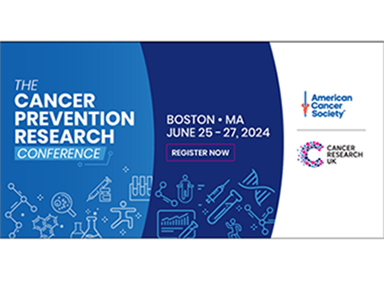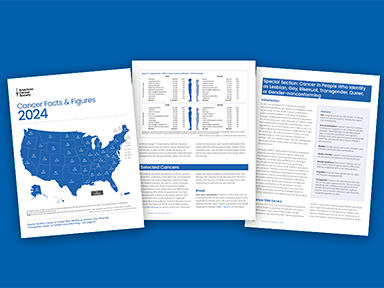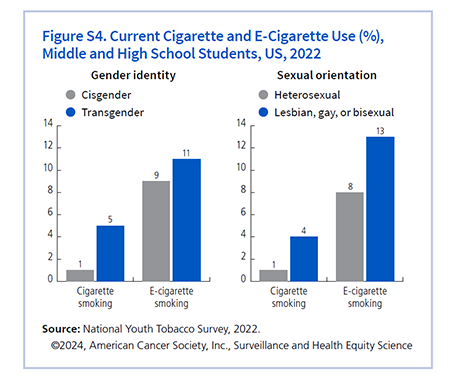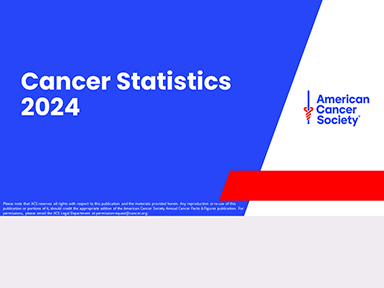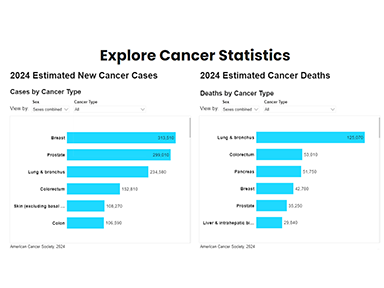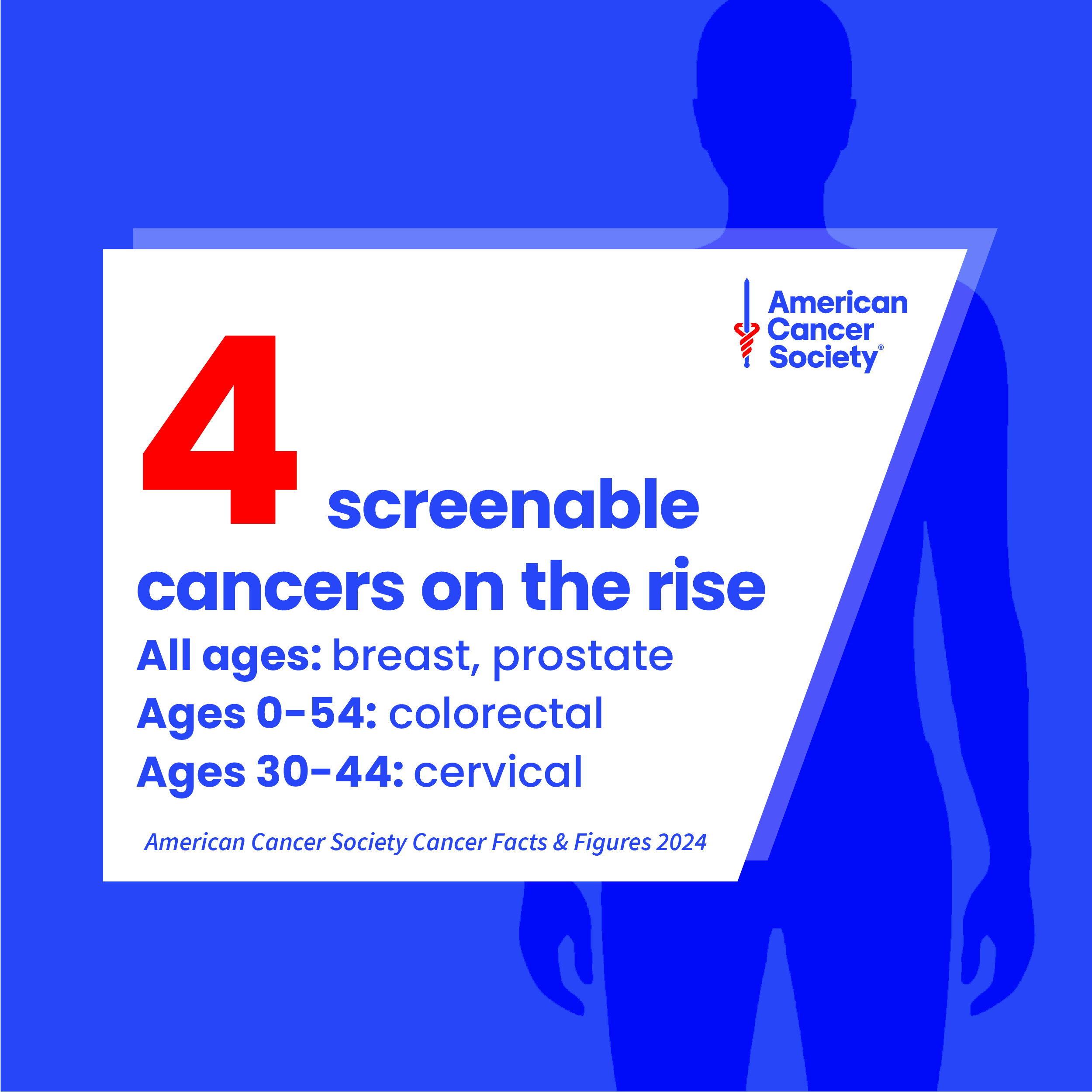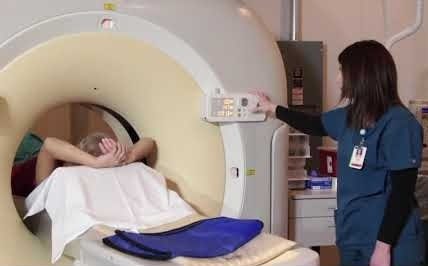Cancer Facts & Figures 2024
Cancer Facts & Figures 2024 is an educational companion for Cancer Statistics 2024, a scientific paper published in the American Cancer Society journal, CA: A Cancer Journal for Clinicians. These annual reports provide:
- Estimated numbers of new cancer cases and deaths in 2024 by cancer site and US state
- Current cancer incidence, mortality, and survival statistics
- Information on cancer symptoms, risk factors, early detection, and treatment
Also see this news story: 2024—First Year the US Expects Cancer Cases to Top 2M
The 2024 Special Section, Cancer in People Who Identify as Lesbian, Gay, Bisexual, Transgender, Queer, or Gender-nonconforming, provides an overview of cancer risk factors and screening prevalence among lesbian, gay, bisexual, transgender, queer, or gender-nonconforming (LGBTQ+) people in the United States. It includes information about cancer prevention and what the ACS is doing to reduce barriers to care and cancer disparities.
Glossary for Nonscientists
Featured Term:
Cancer incidence rate
The number of people who have a new diagnosis of cancer within a defined population (such as people aged 65 and older) and during a specified period of time (like 2019-2021). Incidence rates are usually given as the count per 100,000 population and are adjusted to account for differences in age.
Citations, Credits, & Permissions
Suggested citation: American Cancer Society. Cancer Facts & Figures 2024. Atlanta: American Cancer Society; 2024.
Please note that ACS reserves all rights with respect to the publications and materials provided below. Any reproduction or re-use of an American Cancer Society Cancer Facts & Figures publication or portions of it, should credit the appropriate edition. For permissions, please email the ACS Legal Department at permissionrequest@cancer.org
Most Requested Tables & Figures
Trends in Age-adjusted Cancer Death Rates by Site, US, 1930-2021
Estimated Number of New Cancer Cases and Deaths, US, 2024
- By Sex (PDF)
Estimated Number for Selected Cancers by State, US, 2024 (PDF)
Leading Sites of New Cancer Cases and Deaths - 2024 Estimates (PDF)
Probability of Developing Invasive Cancer During Selected Age Intervals by Sex, US, 2017-2019 (PDF)
Incidence and Mortality Rates for Selected Cancers by Race and Ethnicity, US, 2016-2020 (PDF)
2024 Supplemental Data
Estimated Number for the 4 Major Cancers by Sex & Age Group, 2024
Estimated Number of New Cases & Deaths by State for 21 Cancer Sites, 2024 (PDF)
Lifetime Probability of Developing & Dying from Cancer for 23 Sites, 2017-2019 (PDF)
Download Free Graphics
Use these images to share important findings from the American Cancer Society Cancer Facts & Figures 2024 report.

